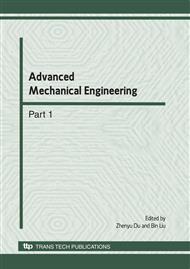p.1061
p.1065
p.1069
p.1075
p.1079
p.1083
p.1088
p.1093
p.1099
Optimal Production Scheduling for the Polyamide Fiber Plant Using Simulated Annealing
Abstract:
This paper addresses the problem of optimizing production schedules of multiproduct continuous manufacturing facilities where a wide range of products are produced in small quantities, resulting in frequent changeovers. A real-world scheduling problem from the polyamide fiber plant is investigated. The problem involves a sequencing of products. The problem is formulated as a mixed-integer linear programming (MILP) model. The mathematical model has a linear objective function to be maximized. A simulated annealing (SA) algorithm is proposed for this scheduling problem. The computational results show that a satisfactory solution can be obtained in reasonable computation time. Case study demonstrates the effectiveness and the applicability of the model and the proposed methods.
Info:
Periodical:
Pages:
1079-1082
Citation:
Online since:
June 2010
Authors:
Price:
Сopyright:
© 2010 Trans Tech Publications Ltd. All Rights Reserved
Share:
Citation:


